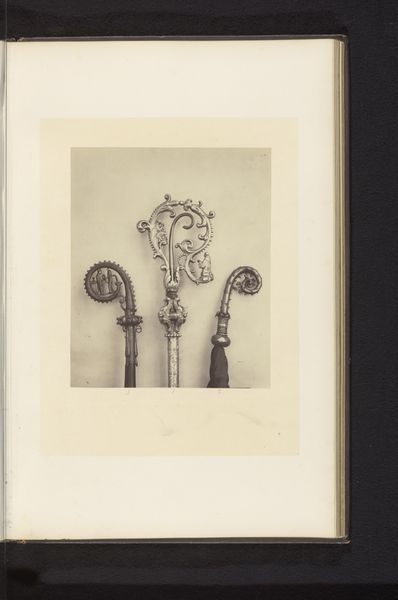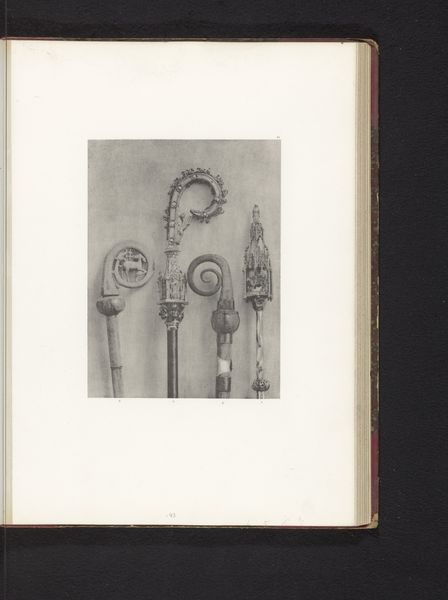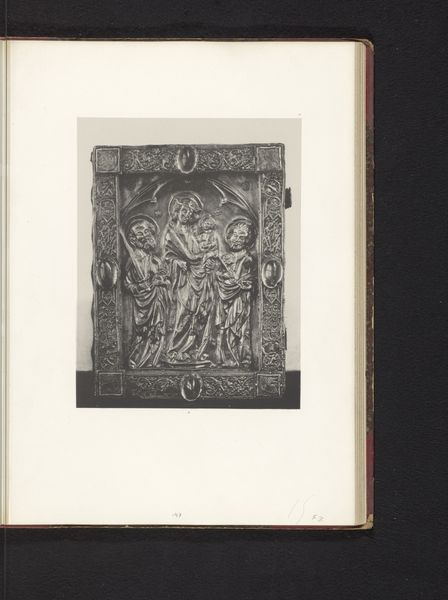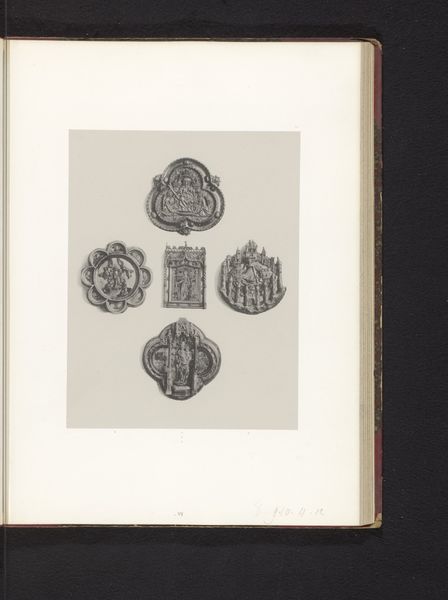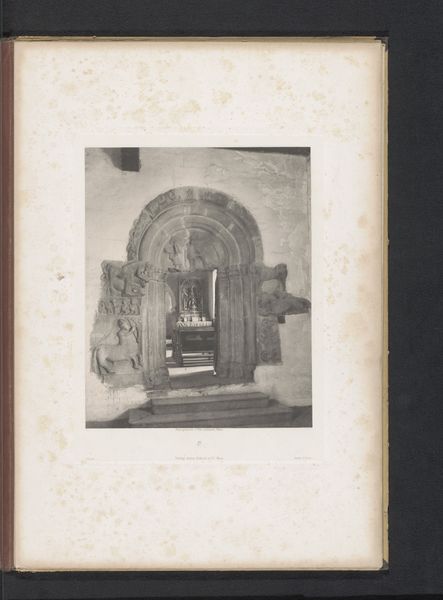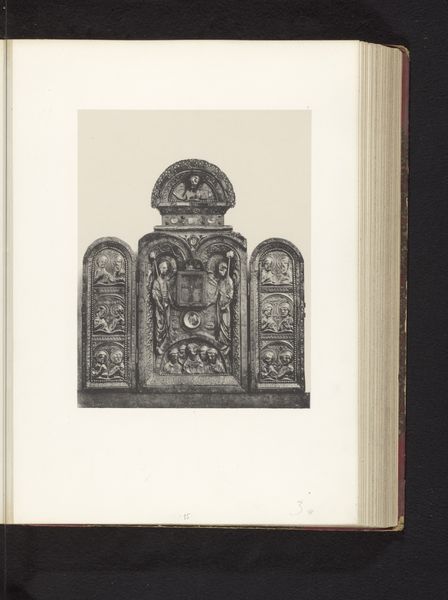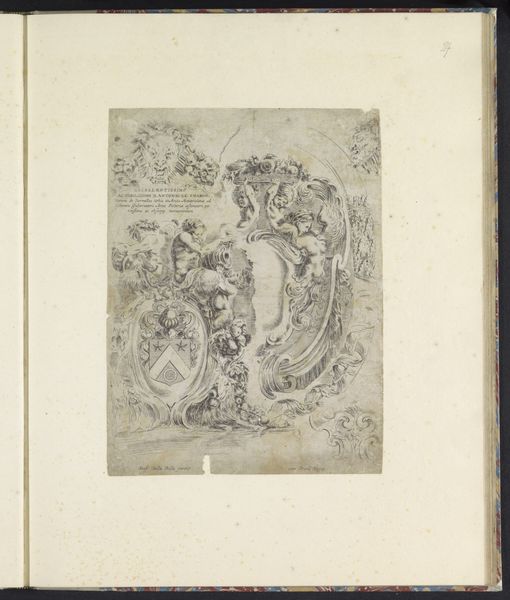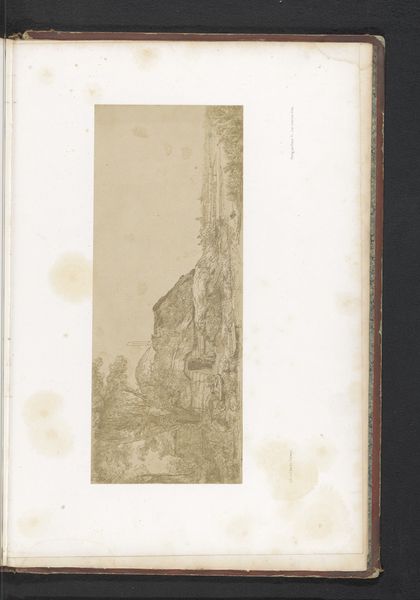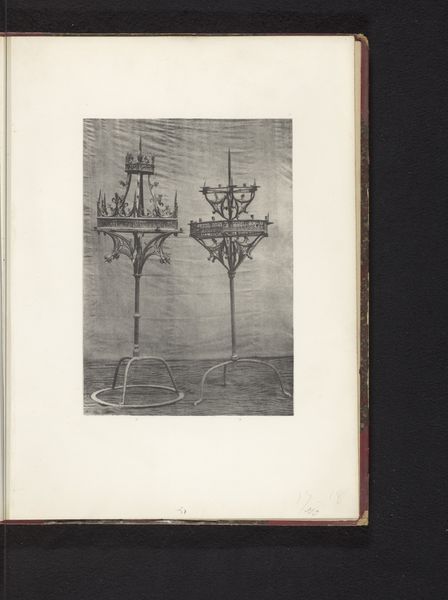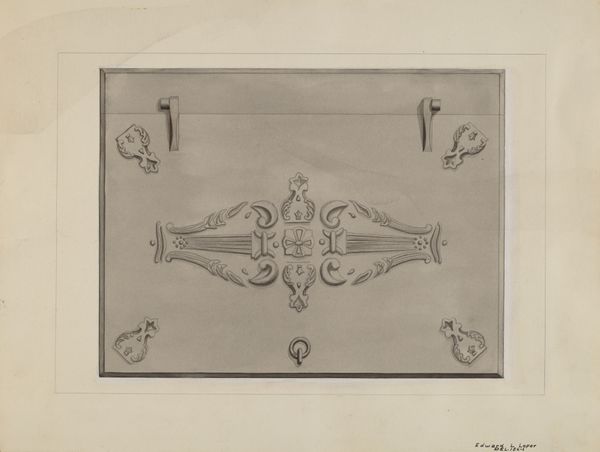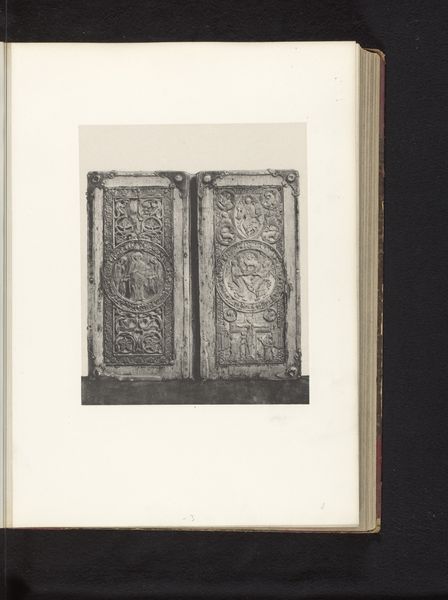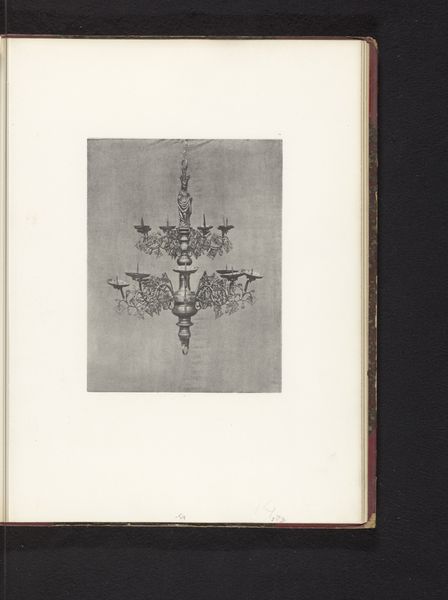
Drie gedecoreerde bisschoppelijke staven, opgesteld op een tentoonstelling over religieuze objecten uit de middeleeuwen en renaissance in 1864 in Mechelen before 1866
0:00
0:00
silver, print, metal, relief, photography
#
medieval
#
silver
# print
#
metal
#
relief
#
11_renaissance
#
photography
Dimensions: height 224 mm, width 180 mm
Copyright: Rijks Museum: Open Domain
Curator: Here we have a photograph by Joseph Maes. It depicts three decorated bishop's crosiers as displayed in an exhibition of religious objects from the Medieval and Renaissance periods held in Mechelen, Belgium, in 1864. The canes themselves are fashioned from precious metals, likely silver. Editor: Well, aren't they something? My first thought is—serious bling. Like the power dressing of another age. I'm drawn to how intricately detailed each is, yet also quite distinct. Almost personalities on sticks, wouldn’t you say? Curator: Absolutely. Each staff served as a powerful symbol of the bishop's authority and spiritual role. The ornamentation often incorporated Christian iconography, serving to remind both the bishop and his flock of religious duties and promises. Their presence in the 1864 exhibition also reflects a 19th-century interest in religious antiquarianism. Editor: I get a sense of weight, beyond the actual materials. Those staffs weren’t just pretty ornaments; they were totems representing institutional power. Do you think exhibiting them removed some of their, let's say, spiritual danger? Curator: Exhibitions always transform objects, to some extent detaching them from their original contexts and re-situating them as historical artifacts or items of cultural interest. The very act of display, especially within the context of a secular exhibition, inevitably alters how they’re perceived. Editor: So, like a bishop's sceptre neutered under glass, turned from holy tool into a pretty thing. Makes you wonder how people experienced it back then, if they pondered about religion and power. The contrast between the objects' intent and the new context is a trip. Curator: Precisely! It also speaks volumes about the 19th century's complex relationship with religion and the Middle Ages, transforming potent symbols of religious authority into objects for detached contemplation. Editor: From scepter to spectacle—it really does make you think. I wonder where those crosiers are now? And if they are back on duty or gathering dust in someone’s storage! Curator: It's a reminder that art exists in constant dialogue between past and present. Each exhibition changes both object and context again.
Comments
No comments
Be the first to comment and join the conversation on the ultimate creative platform.
